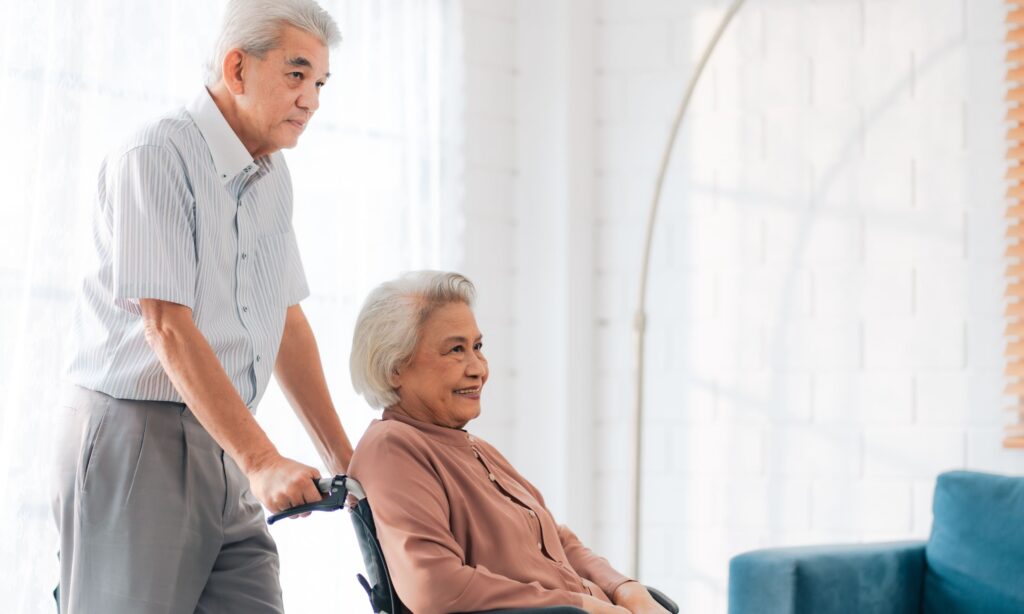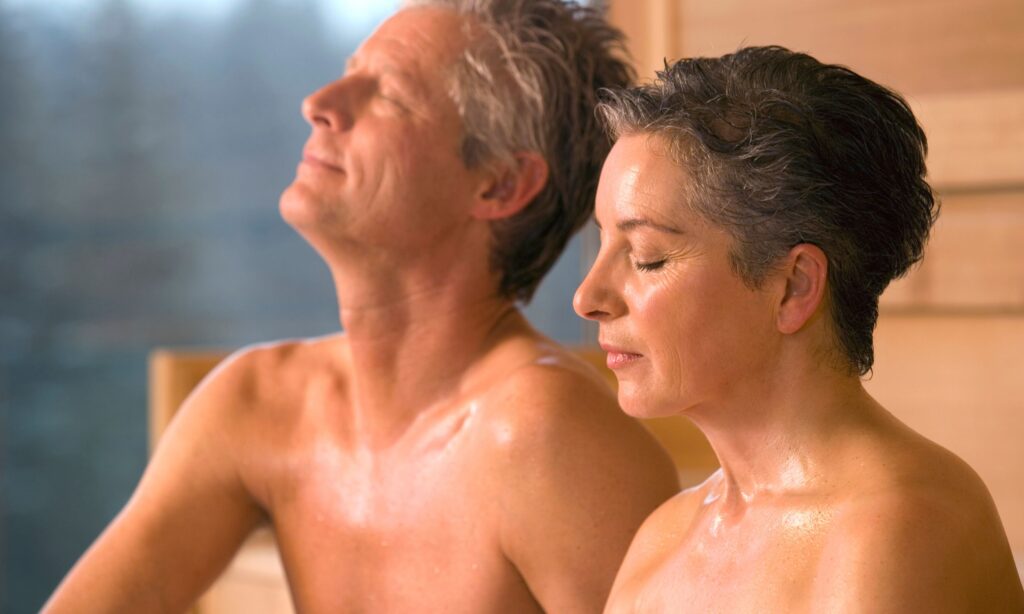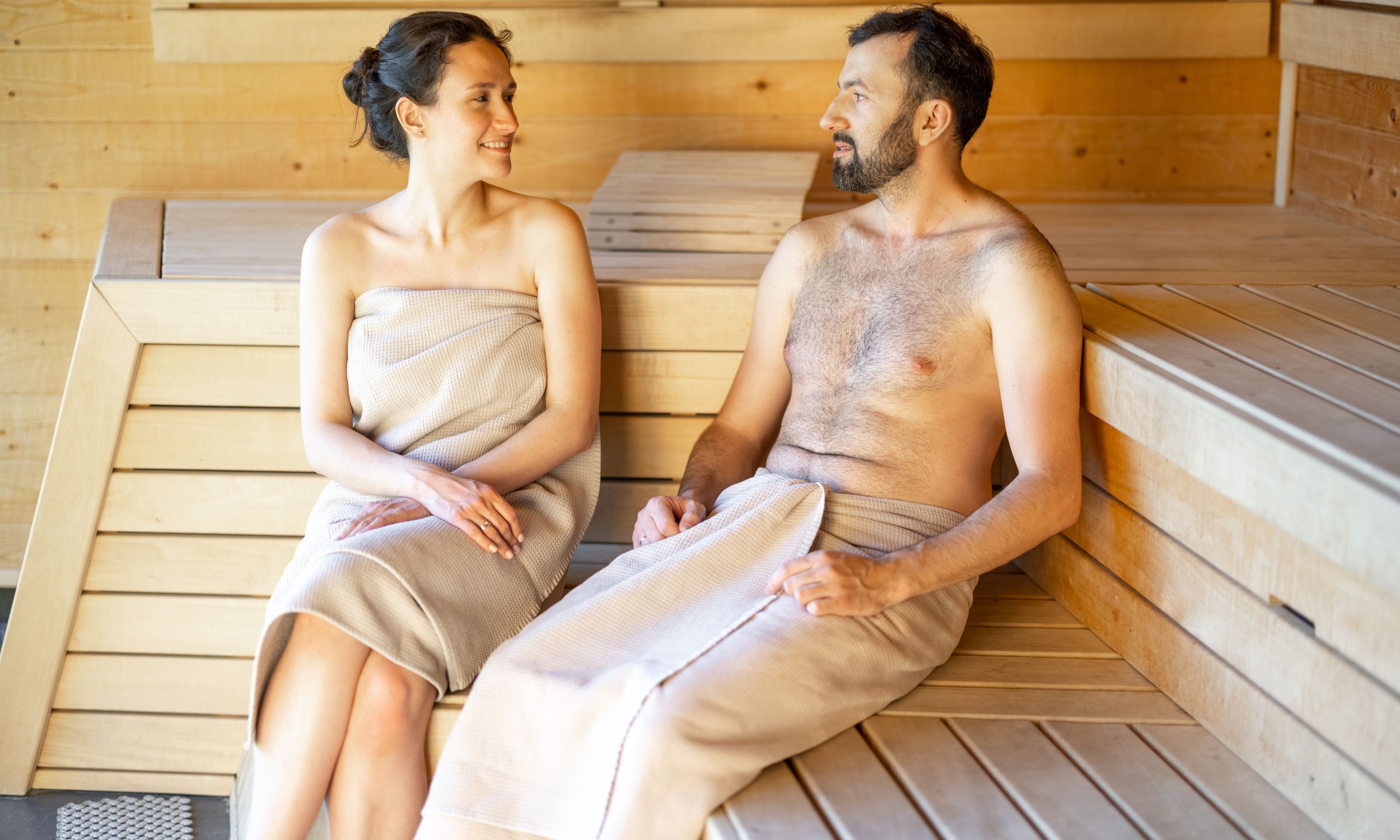Regular sauna use of any kind will improve both the health and appearance of skin. If you are curious if saunas can actually boost collagen production and augment the quality of your skin and other organs that rely on collagen for functionality, you may be surprised to find out that regular sauna use of a specific kind may actually improve collagen production.
Large numbers of individuals are concerned about their personal collagen production because this protein combined with elastin are responsible for the bouncy youthful appearance of skin. Many skin creams purport to contain collagen enhancing agents, but these creams and lotions may not always actually affect collagen production.
There are certainly ways to improve collagen production within your body that actually have sound scientific evidence to support this truth.
Saunas may not be the most direct means to enhance collagen production, so you may also want to consider partnering your sauna use with other protocols to improve collagen production.
Find out what the scientific data is saying about sauna use and collagen production, and what type of sauna you should use if collagen production is high on your list of reasons to use a sauna.
What is the Big Deal With Collagen and Skin
The skin is the outermost layer of the human body and is the first barrier between the inner world of the body and its environment. This means that skin is exposed directly to many different toxins, pollutants, and chemicals. Improving the overall quality and appearance of the skin requires more than just improving collagen production; however, an uptake in collagen production will certainly help to maintain skin health.
Elastin and collagen are proteins that weave together to create a matrix-like formation throughout the skin organ. These two proteins working in tandem help to keep the skin taught and plump. This is why discussions surrounding collagen are so much in the forefront of media and skin care. (1)
As we age, the presence of collagen in the skin lessens, and eventually fine lines, wrinkles, and sagging skin begins to appear. For those looking to avoid or delay the onset of these portions of aging, improving collagen production will certainly help with maintaining the appearance of youthful skin.
Saunas may help with skin health in many more ways beyond collagen production. Increased sweating allows the pores to open up and release pathogens and toxins out through the skin instead of just absorbing environmental toxins. Saunas also help to improve blood flow, reduce inflammation, and improve immunity.
For the purpose of this article we will primarily focus on how saunas may improve collagen production.
How Sauna Use May Improve Collagen Production: The Research Behind the Claim
- Mild Wrinkling
- Photo-aged Facial Skin Lesions
- Hyperpigmentation
A study published by the National Institute of Health revealed the impact that far infrared light exposure has on aging skin and its potential to reverse the effects of aged or damaged skin. This study primarily focused on the presence of the proteins elastin and collagen before and after in study participants to determine the efficacy of infrared light on skin health. (2)

The published study “Effects of Infrared Radiation on Skin Photo-Aging and Pigmentation” evaluated the presence of collagen in 20 participants over a six month period. Both before, during (every 4 weeks), and after biopsies were taken of the participants skin to monitor changes in the presence of collagen and elastin. All of the participants reported mild-wrinkling, and hyperpigmentation as well as other signs of early aging skin before the study began. (2)
In both objective measurements as well as subjective measurements the study revealed a 50-75% increase in the overall quality of the participants skin.
“These results suggest that infrared radiation may have beneficial effects on skin texture and wrinkles by increasing collagen and elastin contents from the stimulated fibroblasts. Therefore, skin treatment with infrared radiation may be an effective and safe non-ablative remodeling method, and may also be useful in the treatment of photo-aged skin.” (2)
There may be faster ways to improve collagen production than using a far infrared or full spectrum infrared sauna. However, in just six months participants in this study noticed a remarkable uptake in the appearance of their skin, and those conducting scientific sampling indicated a clinically significant uptake in the presence of collagen in its participants.
Support Your Collagen Production With Infrared Saunas, and Ingestible Collagen
If your goal in using a sauna is to improve collagen production, it will need to be a far infrared sauna, or a sauna that includes far infrared light. The participants of the study mentioned above were exposed to far infrared light for 20 minutes a day for 5 days a week over the course of six months.
This may seem like a lot of time to spend in the sauna, but most research suggests that sauna use needs to be implemented 3-4 times a week to effect significant biological change. If you have already committed to using a sauna for other health reasons then following a similar protocol to improve collagen production will not be out of the ordinary.
In addition to using a far infrared sauna for collagen production, recent studies suggest that ingesting collagen can also dramatically improve its presence in the body.
Published by the Journal of Cosmetic Dermatology, the study ‘The effect of oral collagen peptide supplementation on skin moisture and the dermal collagen network: evidence from an ex vivo model and randomized, placebo-controlled clinical trials’, elaborates on the effectiveness of ingesting collagen orally.
“The oral supplementation with collagen peptides is efficacious to improve hallmarks of skin aging.” (3)

This same study elaborates on the efficacy of oral collagen supplementation in this statement:
“Oral collagen peptide supplementation significantly increased skin hydration after 8 weeks of intake. The collagen density in the dermis significantly increased and the fragmentation of the dermal collagen network significantly decreased already after 4 weeks of supplementation.” (3)
If improving collagen production is a priority, then it is definitely worth ingesting it orally in addition to your sauna protocol. Sauna use can be wildly helpful in many areas of health and it is also worth considering adding other protocols for a well rounded result.
Below the First Layer: Collagen is Also Radically Important in the Maintenance of Connective Tissues For Joint Health
Beyond improving skin appearance and health, collagen is very important in maintaining the health of connective tissues, particularly as aging occurs. Even if your primary interest in improving collagen production is for the augmentation of your skin’s youthful appearance, then as a secondary benefit, you will also be aiding the health of your tendons and ligaments that are so important for joint health.
Whether improving collagen production is on your radar for cosmetic reasons or for deeper healing within the joints, then finding ways to uptake collagen in your body is well worthwhile.
With a combination of far infrared sauna use and collagen ingestion of the right variety you will be sure to improve the overall presence of the magnanimous protein called collagen.
To find the best type of collagen to ingest please consult with your dermatologist or healthcare professional. As always if you plan to use a sauna regularly please be sure to stay well hydrated as this will also affect your overall health and the appearance of your skin.
Sources Cited:
- https://www.webmd.com/skin-problems-and-treatments/elastin-what-to-know
- https://www.ncbi.nlm.nih.gov/pmc/articles/PMC2687728/
- https://onlinelibrary.wiley.com/doi/10.1111/jocd.12174
- https://www.hubermanlab.com/episode/how-to-improve-skin-health-appearance










